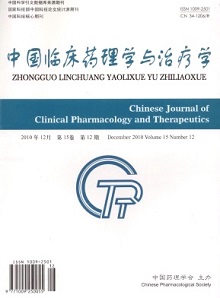Study on the therapeutic effects of ferulic acid sodium in cerebral hemorrhage model rats induced by collagenase and its mechanism
SUN Yu-ming, LOU Jian-Tao, HUANG Guang-xiang, SUN Jun
2010, 15(12):
1377-1382.
 Asbtract
(
159 )
Asbtract
(
159 )
 PDF (224KB)
(
231
)
References |
Related Articles |
Metrics
PDF (224KB)
(
231
)
References |
Related Articles |
Metrics
AIM: To investigate the therapeutic effects of ferulic acid sodium in cerebral hemorrhage model rats induced by collagenase and its mechanism.METHODS: 108 male SD rats were randomly divided into 3 groups,including sham operation group, acute cerebral hemorrhage group(ICH model group), ferulic acid sodium intervention group(treatment group).Each group including 6 subgroups:2,6,24,48,72 h,1 week group.Treatment group intraperitoneal injection ferulic acid sodium 100 mg·kg-1·d-1 which was diluted by 3 mL NS. ICH model group intraperitoneal injection NS.After 7 days, the changes of neuroethology in each group were observed, the brain water content was detected,the expression of AQP4 mRNA was detected by RT-PCR, and the level of plasma endothelin was determined.RESULTS: Compared with the sham operation group,the the Longa evaluation was obviously increased in the ICH model group and the treatment group before treatment. Compared with the ICH model group,the Longa evaluation was obviously decreased in treatment group (P<0.05) during 6 to 48 h;and the limbs symmetry score was significantly decreased in treatment group during 6 h to 1 week (P<0.05);the balance beam score was significantly decreased in treatment group during 24 hours to 1 week(P<0.05).At the 48 and 72 h,the levels of brain edema in treatment group were significantly inhibited(P<0.05).Compared with the ICH model group,the mRNA expression in treatment group was decreased after making model 72 h,there was no significant difference (P>0.05) .During 6 to 72 h,the level of plasma endothelin was significantly decreased (P<0.05)in treatment group.CONCLUSION: Treating cerebral hemorrhage by ferulic acid sodium can improve neuroethology and anti brain edema,its mechanism is related to reducing the generation of endothelin.


